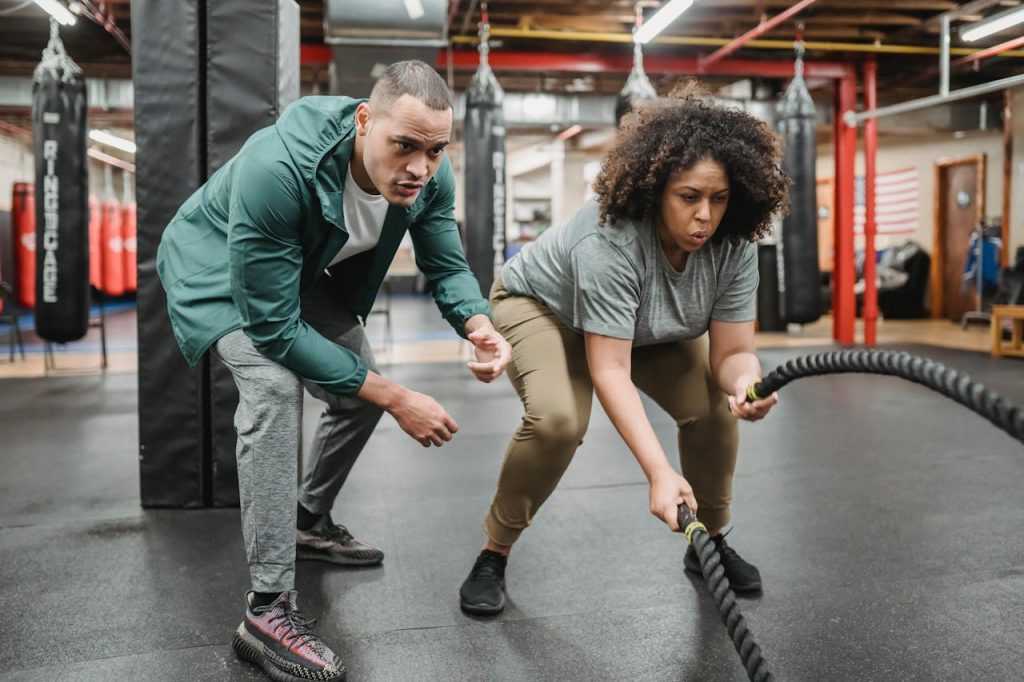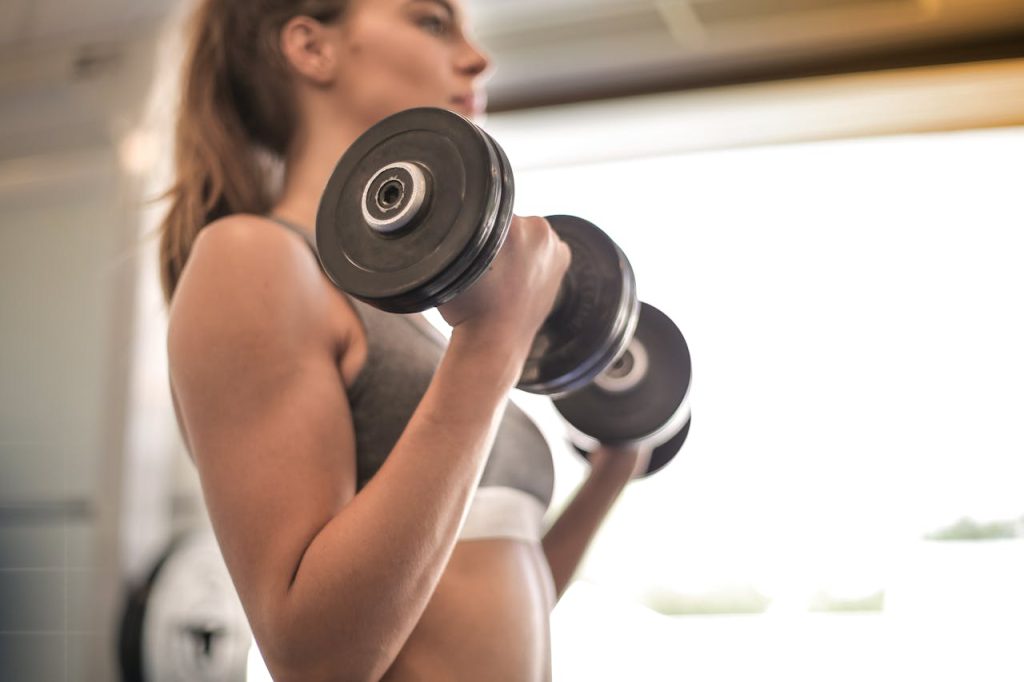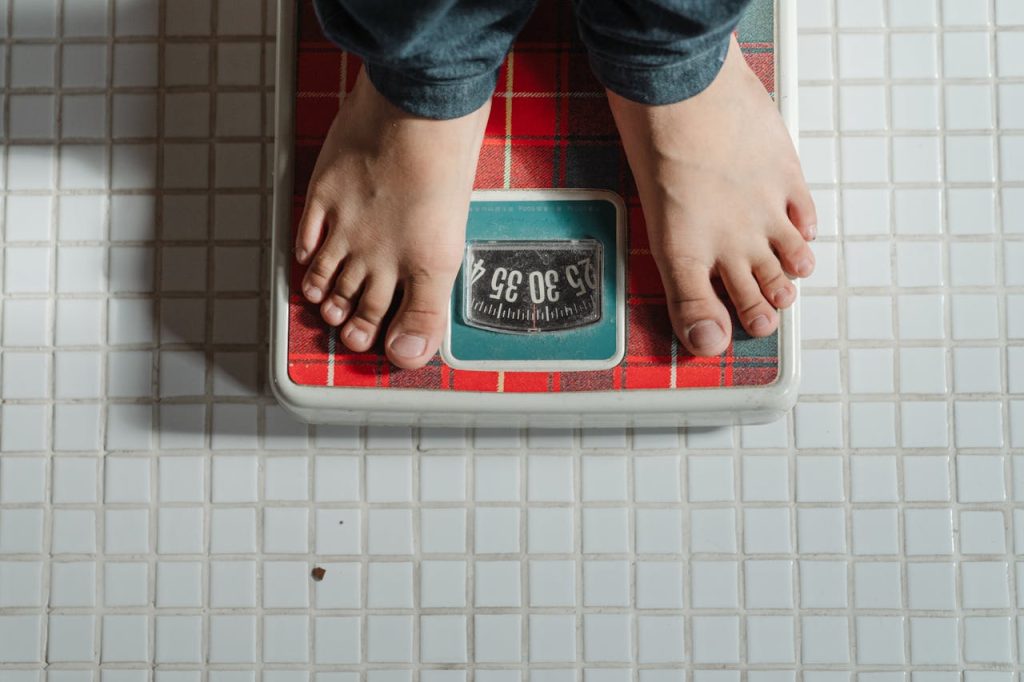The top gentle mobility routines to start your day feeling better at 50+ emphasize slow, easy moves that help wake up the joints and muscles. These typically employ easy stretches, gentle joint circles, and breathing exercises. Most choose movements that do not stress the body, like head rolls, shoulder shrugs, and gradual knee lifts. Most of us agree these moves help loosen stiff joints and promote blood circulation. For 50+, minutes each morning with these gentle moves can establish a tranquil cadence for the day and stave off aches. To demonstrate how these routines work and which moves to try, the main body dissects the best steps and tips for daily use.
Key Takeaways
- These routines help you start your day feeling more flexible, more circulated and physically ready — which makes everyday life easier and decreases the risk of falls.
- Adding mindfulness and deep breathing to your morning movement does not only do wonders for your physical health, but for your mental clarity, focus and emotional well-being.
- From Sunrise Flow to Seated Start, Balance Builder to Core Awakening and Joint Joy all these foundational routines are flexible, cover every major muscle group and can be customized to your ability for sustainable results.
- Let your body be your guide, always differentiating between pain vs. discomfort and adapting exercises to your fitness level – staying safe, preventing injury.
- Now, cultivating a morning ritual in a sacred distraction-free space, accompanied with inspiring music or sounds, makes all the difference in creating an enjoyable and sustainable mobility practice.
- Staying hydrated, eating nutrient-rich foods and adding micro-movements during your day will continue to support joint health, energy and vitality, beyond your morning routine.
Why Morning Mobility Matters
Morning mobility isn’t just a warm-up—it’s creating a bedrock of physical comfort and mental clarity. Easy, slow body movements in the morning loosen muscles and joints so that it’s easier to move all day. These habits are adaptable to any level, keeping individuals mobile and self-reliant into their golden years.
Beyond Stiffness
Easy, light movements – think slow arm circles or ankle rolls – can relieve the stiffness that sleep brings. This causes joints to feel less stiff and makes it easier to begin your day.
Dynamic stretches — like knee lifts or shoulder swings — increase blood circulation to major muscle groups. This increased circulation can reduce stiffness, accelerate waking up, and assist in priming the body for the day. Such a routine, full of dynamic and static stretches, keeps joints healthy and supports a greater range of motion. In seniors it translates to remaining active, maintaining equilibrium, and decreasing the likelihood of injury or falling.
Mind-Body Wakeup
Infusing mindfulness to mobility helps steel focus. Focusing on each movement, even something as easy as turning your neck from side to side, clears your mind and puts you into a stress-reducing headspace.
Deep breathing, coupled with slow stretches, synchronizes the body and mind. For instance, breathing in as you lift the arms overhead and out as you lower them can establish a tranquil rhythm. By planting a tiny seed of intention during the practice—such as hoping for a good day—they can increase their optimism and remain upbeat.
A mindful approach improves emotional well-being and keeps the day on track.
The Vitality Mindset
Creating a ritual demonstrates a positive approach to getting older. Adhering to light morning mobility will maintain energy and lighten spirits, even as the body transforms.
Small, consistent gains—like stretching a little further or experiencing less stiffness—are to be celebrated. Choosing specific, achievable targets maintains motivation. Every win — even a small one — can accumulate confidence and a sense of control.
Your Foundational Mobility Routines
These foundational mobility routines keep people moving better, less stiff and make everyday tasks easier well into old age. These foundational routines are scalable to any fitness level and can take as little as 10 to 20 minutes. Regular practice can increase your range of motion, blood flow and balance, as well as reduce your risk of pain or injury.
The “Sunrise Flow”
One effective morning flow is the Sunrise Flow, which employs easy stretches to awaken both body and mind. Begin with slow movements such as overhead reaches, side bends, and mild twists. Maintain fluid transitions to increase body consciousness and flow between poses. This type of flow elevates heart rate a bit and primes joints for the day. Over time, it can help you move better, becoming more flexible and coordinated to navigate through your day.
The “Seated Start”
Seated routines are a blessing for those who struggle to do standing routines. Basic chair yoga stretches such as seated cat-cow, side bends or gentle twists can ease tight shoulder and back muscles. Concentrate on loosening the upper body from the stiffness of sleep. Even just staying mindful and engaging the core, small movements can help build stability. Take advantage of a stable chair and feet flat to enhance security.
These routines can be performed anywhere. All you require is a chair and a few peaceful minutes.
The “Balance Builder”
Enhancing balance reduces fall risk and supports independence. Single-leg stands or slow side-to-side steps condition stability and help make everyday movement a bit safer. Aids such as chairs or walls provide assistance during these exercises, allowing practitioners to locate the appropriate difficulty level. Balance training further supports neuromuscular control — which is crucial for moving safely. Even mini balance circuits accumulate lifelong benefits when performed daily.
Stability is enhanced once the body becomes accustomed to minor, weighted transitions.
The “Core Awakening”
Core strength is about posture and mobility. Basic exercises, such as seated marches, light knee lifts or pelvic tilts activate the core muscles. Breathing control during these moves can serve to both make them more effective and help launch the body into relaxation. A robust core stabilizes the spine and simplifies everyday activities. These movements require no special equipment.
Core training can be completed sitting or standing, whichever is more comfortable.
The “Joint Joy”
Joint mobility maintains movements fluid and painless. Light circles of the hips, knees and shoulders alleviate stiffness. Daily joint exercise can prevent pain before it begins and maintain joint health. The trick is to mobilize within an easy range and not push beyond.
Even small, joyful movements can make joints happier.
Listen To Your Body
Mobility routines for the 50+ set are best when you listen to your body through each movement. Understanding when to switch it up, take a break, or go for it helps reduce your injury risk and make each session more effective. Listen to your body– everyone’s boundaries and requirements are different, and tuning into that feedback fosters a sustainable, secure practice.
Pain vs. Discomfort
- Pain frequently presents itself as stabbing, acute, or burning. Discomfort is more of a dull, stretching, or mild ache.
- If you experience pain that shoots, stabs or lingers, pause and transition to a lighter move.
- Some mild soreness or tightness is normal, especially if you’re new, but it should fade as you warm up.
- Any indication of swelling, numbness, or joint instability – stop and consult.
- If uncertain about what you feel, consult a medical or fitness pro before you continue.
Certain ‘bad aches’, such as a gentle stretching or heat in the muscles, are par for the course with mobility work. It frequently implies that you are engaging your muscles and joints in novel manners. Ache is the body’s well mannered way of requesting a rest. Don’t force your way through sharp pain, instead, stop and reconsider the movement.
When To Modify
Always begin by tuning in about what feels good and doable. If a move is too difficult, support yourself with a chair, wall or yoga block. Props can assist in making stretches easier and safer, so you can maintain the benefits without stress. As you adjust to the schedule, you may begin to feel prepared to stiffen the challenge. This has to be slow and steady. Little steps allow your body to acclimate.
If you detect any persistent pain, switch it up. If, for instance, rotating the spine feels rigid, experiment with a smaller range or add additional support underneath your back. Maintaining a straightforward journal of what works and what’s falling short can help direct your practice.
When To Rest
Rest is a huge component to any mobility strategy. Your muscles and joints have to recover and become stronger, particularly after new or tougher moves. Breaks ward off burnout and reduce the danger of injury.
If you’re tired, sore, or burned down, exchange your routine with gentle moves—such as a slow walk or light stretching. Rest days are not wasted, they help you squeeze more from each session in the long run.
Create Your Perfect Ritual
Building a morning mobility ritual is about listening to your body and creating a routine that resonates for you. The proper setting, timing and sensory specifics can help this ritual be easier to sustain and more satisfying.
Your Space
A sacred place for your morning ritual counts. Pick a space that’s peaceful, radiantly sunlit and exudes calm with minimalist clutter. This keeps your attention on the movements, not on distractions around you.
Be sure the space is clear and provides you with sufficient room to extend your arms and legs without hitting an object. Stay away from rugs that slide or fall-prone surfaces. Safety is paramount, particularly as you incorporate new stretches over time.
Personal touches like a petite piece of art, a plant, or that favorite chair nearby make the space inviting and incentivize you to come back each day. Retain just what you require in the region—like a mat, towel or water bottle—so it’s simple to kick off every session without fishing for gear.
Your Time
Choose a consistent time every day — immediately upon waking, or before breakfast, works for most people. Consistency develops habits and your body could have the best reaction when movement is something you just do every morning.
If you’re a beginner, 10 minutes is usually sufficient. As you become accustomed to the habit and your body adjusts, you can lengthen the routine with additional movements or longer holds.
Set a timer or phone reminder so you don’t get lost. This minor action cements the ritual, preventing it from being overlooked. If you have a hectic morning, it’s okay to shift your session to later, but attempt to keep it a daily occurrence.
Your Soundtrack
For some, a playlist with easy, up-tempo music makes morning stretches less of a burden. Experiment with various genres—classical, jazz, acoustic—to find what resonates.
A little nature sounds or a soft instrumental track and the ritual becomes a soothing, even meditative experience. This can calm the mind and body, getting you primed to take on the day.
Turn it down so you can concentrate on your exercise without being distracted or overwhelmed by noise.
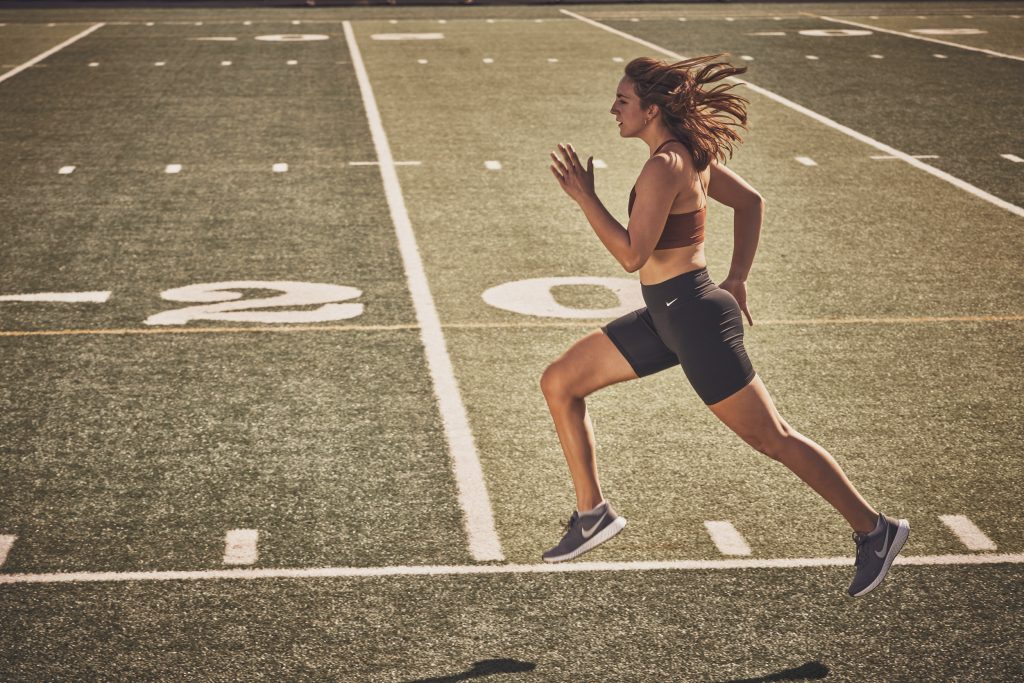
Beyond The Morning Routine
Maintaining mobility and wellness beyond 50 requires more than a morning stretch. Sustainable health is about habit, beyond the morning routine. A well-balanced fitness routine includes a combination of aerobic exercise, strength training, and stretching. Research indicates that 150 minutes of moderate or 75 minutes of vigorous aerobic exercise a week can produce significant health benefits. Although the body evolves over time, individuals who remain active well into their senior years demonstrate that age itself seldom dictates one’s boundaries. Immobility, not time, is the real barrier. Little consistent action—such as a 20–30 minute power walk each day—can go a long way. Try adding these gentle mobility practices:
- Take standing breaks every hour.
- Rotate wrists and ankles while at your desk.
- Use a foam roller for five minutes post-lunch.
- Practice slow, controlled squats in the kitchen.
- Add a balance pose, like tree pose, post-tooth brushing.
- Try gentle yoga, tai chi, or Pilates classes weekly.
Micro-Movements
Small, consistent shifts assist circulation and prevent stiffness for those who lounge or stall for hours. Simple stretches–neck rolls, shoulder shrugs or ankle circles–can be performed anywhere, at work or at home. Even quick walking breaks—across the room or down the hall—prevent your muscles from going stiff. Such small moves may not appear significant, but they accumulate, combatting the impact of a sedentary day and fueling enduring fitness.
Hydration’s Role
Hydration Status | Muscle Function | Joint Health |
Well-hydrated | Supports contraction | Lubricates, cushions |
Dehydrated | Increases cramping | Stiffness, discomfort |
Without sufficient water, muscles fatigue more quickly and joints can become achy or tight. Hydrating regularly, instead of waiting to become thirsty, allows your body to maintain equilibrium. Water-dense foods, like melons, oranges, or cucumbers, contribute hydration and nutrients. This consistent assistance is crucial for mobility, particularly as the body grows older.
Nutritional Support
- Choose whole, nutrient-dense foods.
- Include lean protein with each meal.
- Opt for snacks like nuts, yogurt, or fruit.
- Limit processed sugar and fried foods.
- Plan meals to avoid energy crashes.
Healthy eating keeps energy on an even keel and helps muscles to recover. Smart snacking surrounding mobility routines can lubricate movement, and well balanced meals can strengthen joints and immunity. Smart diet choices keep your body limber and feeling good.
The Unseen Benefits
Light mobility sessions provide more than just physical flexibility – they promote mental acuity, emotional stability, and long-term health. For seniors, these habits optimize vitality, happiness, and rest — and are crucial in staving off muscle degradation and equilibrium well into old age.
Physical Activity | Mental/Emotional Benefit |
Gentle stretching | Reduced anxiety, mental calm |
Compound movements | Boosted confidence, sense of control |
Balance exercises | Lower stress, improved mood |
Regular daily sessions | Sharper focus, greater clarity |
Mental Clarity
Morning mobility gets your day off to a clear-headed start. Even basic movements, like neck rotations or shoulder rolls, increase blood flow to the brain, enhancing attention. This clarity spills over into work or daily tasks, allowing you to make decisions and solve problems more effortlessly.
As you wander, your mind tends to float. Activities such as deep breathing during light stretching can assist in clearing brain fog. This simplifies intention setting for the day. Once movement is a habit, it serves as a reminder to shed yesterday’s concerns and attack the new day with intent.
Exercise promotes the liberation of neurochemicals, inspiration and ideas. Individuals who incorporate movement into their mornings wake up with stronger memory and crisper thinking. By harnessing these benefits on a daily basis, you can help keep your mind sharp as you age.
Sustained Energy
Even a brief mobility routine in the morning—say 10 minutes of dynamic stretching—can do wonders for your energy. Practitioners of gentler movement in the morning tend to experience less fatigue throughout the day.
Periodic movement keeps the fatigue/sluggishness monsters at bay as they lurk and grow from storm to storm throughout the years. This is particularly vital, as muscle mass diminishes after 40 and an active lifestyle slows this self-destructive process.
Mobility routines help regulate energy and mood. Compound exercises—like squats or supported lunges—that utilize multiple muscle groups are efficient and have you moving with intention all day.
Deeper Sleep
A consistent mobility ritual is connected to improved, deeper sleep. When you work out, your body has an easier time hitting the pillow and getting up on schedule.
Stretching before bed can help to relax your muscles and soothe your mind. This results in deeper sleep, which in turn helps keep your joints moving and your body healthy.
Better sleep means better movement the next day.
Balance and Confidence
Minor fluctuations in equilibrium pass unnoticed until a stumble draws attention to their importance.
Building upper body strength is possible at any age.
Short daily sessions keep you strong and safe.
Conclusion
Gentle mobility routines every morning can release stiff joints and awaken stiff muscles. Slow circles with your arms, soft turns at your waist and ankle rolls get you moving with less pain. These moves require minimal space, zero equipment, and nestle into most lifestyles. Millions of 50+ year olds report feeling less stiff and more liberated from only ten minutes of easy moves. Tiny incremental progress every day can create powerful habits. Test out some new moves, see what feels good, and hang onto them in your daily rotation. Share the victories or hints with friends or relatives. Be open, keep it simple, and follow your body’s rhythm. Your next good day could begin the second you move.
Frequently Asked Questions
1. What are gentle mobility routines?
Gentle mobility routines are easy movements and stretches that increase flexibility and joint health. They’re gentle on the body and designed for all fitness levels, particularly those 50+.
2. How long should a morning mobility routine take?
A morning routine can require as little as 10 minutes. Consistency is key, not duration. Short, daily routines work best for better movement and comfort.
3. Can I do mobility routines every day?
Yes, daily mobility routines are safe and advised. They keep your joints healthy, and lessen stiffness, and can be modified depending on how your body ‘feels’ on the given day.
4. What are some basic exercises to include?
Begin with neck circles, shoulder rolls, gentle twists, hip circles, and ankle movements. Involving major joints, these can be done with no equipment.
5. Do I need special equipment for mobility routines?
No, any of these gentle mobility routines can be done with nothing but a comfortable space. A yoga mat can provide additional comfort, but isn’t required. The emphasis is on gentle and deliberate motion.
6. How do I know if a routine is too challenging?
If you experience pain or discomfort, the routine might be too aggressive. Listen to your body, take it slow, and modify exercises as necessary to remain safe.
7. What are the benefits of morning mobility for people over 50?
Morning mobility helps eliminate stiffness, boost balance and energy and promotes better movement all day long. They keep injuries at bay as you get older.
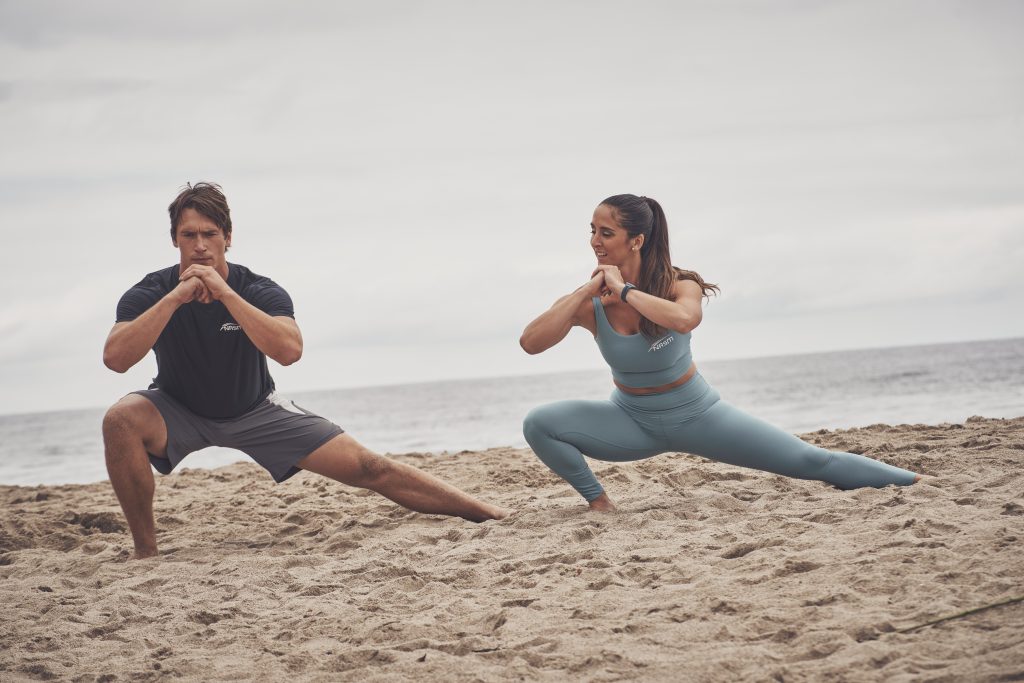
Start Your Journey To Lifelong Health And Confidence With Fitness Ellipsis!
Are you ready to embrace a healthier, more active lifestyle in your golden years? At Fitness Ellipsis, we understand that successful weight loss isn’t just about the number on the scale, it’s about enhancing your energy, boosting your confidence, and empowering you to live fully and independently.
Our specialized Weight Loss Program for Seniors is thoughtfully designed to meet your unique needs. With expert guidance, personalized coaching, and gentle, effective exercises, we help you shed unwanted weight while improving mobility, balance, and overall wellness. Whether you’re new to fitness or looking to get back on track, our compassionate team will support you every step of the way.
Through customized nutrition strategies, age-appropriate workouts, and unwavering encouragement, we focus on sustainable results that keep you feeling vibrant, strong, and in control of your health. You’ll not only lose weight, you’ll gain freedom, energy, and a renewed zest for life.
Don’t wait to reclaim your well-being and vitality. Join the Fitness Ellipsis family today and take the first step toward a leaner, stronger, and more empowered retirement. Contact us now to discover how our weight loss program can transform your health and help you thrive today, tomorrow, and for years to come.


